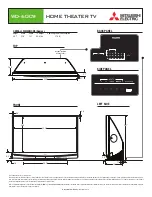
13
Subject to technical alterations
ACO Haustechnik
0 1 7 3 . 0 2 . 5 9 G
2. Battery
2.1. Behaviour in case of battery fault
Establish mains connection and wait. Battery faults always occur
with insufficient charging condition of the battery or with a dama-
ged battery fuse.
2.2 Motor fault in mains / battery operation
Check motor fuse and supply or connecting cable for damages. If
required, start initialisation by double-pressing button (5). Check
motor spindle by de-assembling the housing cover (spindle break).
In this case, contact fitter / specialist contractor.
The control is equipped with a battery which ensures operation for
at least 24 hours in case of a mains failure. After 24 hours, an
empty battery has again attained 90 % of its capacity.
Batteries are subject to a natural ageing. In this case, the battery has to
be exchanged (original type from manufacturer).
The manufacturer recommends to exchange the battery prophylactically
after 5 years.
Caution!
A battery exchange may only be carried out by
an electrician. Prior to opening the housing,
isolate from mains electrical supply.
3. Fuses
3.1 Fuses
A microfuse is fitted to the circuit board to protect the micro-elec-
tronics of the control effectively against connection faults and occu-
ring faults.
Battery fuse
Fuse 1 protects the control against reverse polarity of the battery. If the
fuse responds, cabling has to be checked and a new fuse has to be
inserted.
3.2 Fuse values
Fuse
Value
Behaviour
Battery fuse
2.5 A
slow-blowing
The anti-flood protection system does not have any mains fuse in the
form of a safety fuse. One fuse is integrated in the primary circuit of
the mains transformer in the form of a thermal switch. In case of an
electronics defect, this switch opens after a short period when reaching
a temperature of 120°C. In this happens, the control is seriously dama-
ged. It must be handed on to the fitter / specialist contractor for repair.
3.3 Automatic self-test
Every 4 weeks, the control carries out a self-test. The motor is started
and stopped for some seconds to avoid the seizing of the drive. The
battery is checked at the same time and a fault signal is given, where
applicable.
3.4 Battery warning
With every run of the flap, the battery is checked. In case of a low bat-
tery capacity, a warning signal is given (LED 4 flashes slowly). In this
case, the buzzer is not switched on. If this signal appears, the battery
should be exchanged promptly for safety reasons.
Even in the case of mains operation, function of the control is guaran-
teed only with a fully functional battery. The control must not be opera-
ted without battery!
3.5 Decommissioning
In battery operation, the device can be switched off manually. For this,
both buttons must be pressed at the same time for approx. 5 seconds.
As an acknowledgement, all LEDs light up, then the control is switched
off. The battery hence remains loaded.
If the appliance is separated from the mains, it switches to battery ope-
ration until same is unloaded and appliance switches off completely.
Caution!














































